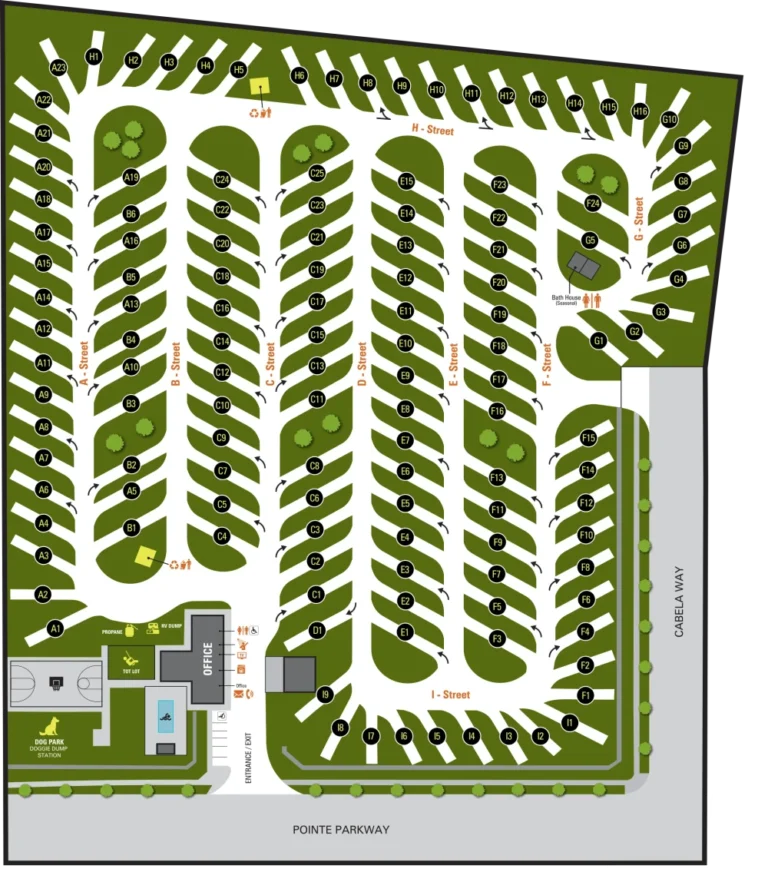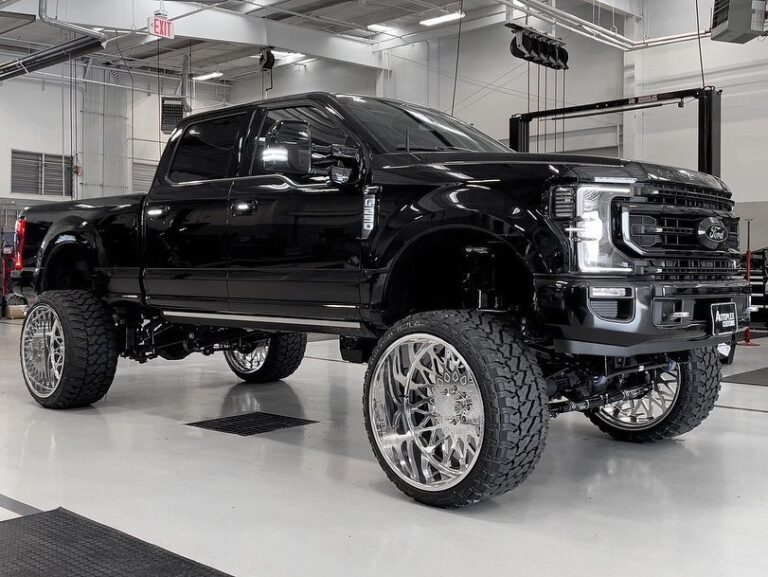Largest Sleeper Truck Ever Produced: The Ultimate Home on Wheels
Largest Sleeper Truck Ever Produced: The Ultimate Home on Wheels cars.truckstrend.com
The open road has always held a certain allure, a symbol of freedom and opportunity. For the professional truck driver, however, it’s also their workplace and, often, their home for weeks or even months at a time. While standard sleeper cabs offer basic accommodations, a select category of vehicles pushes the boundaries of comfort, space, and luxury: the largest sleeper trucks ever produced. These aren’t just trucks; they are mobile mansions, meticulously designed to provide an unparalleled living experience for those who dedicate their lives to traversing the nation’s highways.
This article delves into the fascinating world of these colossal rigs, exploring what defines them, why they exist, and what it takes to own or operate one of these magnificent machines. We’ll uncover the engineering marvels, the opulent interiors, and the practical considerations that make the "largest sleeper truck ever produced" a truly unique segment of the trucking industry.
Largest Sleeper Truck Ever Produced: The Ultimate Home on Wheels
What Defines the "Largest Sleeper Truck"?
Defining the "largest sleeper truck ever produced" isn’t as straightforward as simply measuring length. While overall dimensions play a significant role, the true measure lies in the livable square footage and the breadth of amenities offered within the sleeper compartment. Unlike factory-standard sleepers, which typically range from 36 to 80 inches in length, these behemoths can feature sleeper sections stretching over 200 inches, effectively transforming the back of a semi-truck into a fully functional apartment.
These extraordinary vehicles are almost exclusively custom builds, commissioned by owner-operators or small fleet owners who prioritize driver comfort, retention, and a high quality of life on the road. They are not mass-produced models you’d find on a dealership lot, but rather bespoke creations from specialized customizer shops. The "largest" often implies:
- Extended Sleeper Length: Beyond standard factory options, often requiring custom chassis extensions.
- Increased Height: Often featuring raised roofs to allow for standing room throughout.
- Expanded Width: Some designs incorporate wider sleeper sections that extend beyond the truck’s frame.
- Comprehensive Amenities: Full kitchens, bathrooms with showers, dedicated living areas, bedrooms, and advanced entertainment systems.

While no single "largest ever" model holds a universal, Guinness-style record, trucks from companies like ARI Legacy Sleepers, Indiana Custom Trucks (ICT), and Bentz Transport Products are frequently cited for building some of the most expansive and luxurious sleepers on the planet, pushing the boundaries of what’s legally and practically possible.
The Anatomy of a Behemoth: Engineering and Interior Design
Creating a mobile residence of this scale requires significant engineering prowess and meticulous interior design. It’s a delicate balance of weight distribution, structural integrity, and ergonomic planning.
Under the Hood and Chassis:
The foundation for a large sleeper truck is typically a heavy-duty Class 8 truck chassis from manufacturers like Peterbilt, Kenworth, Freightliner, or Volvo. These chassis are then often extended by specialized shops to accommodate the massive sleeper unit. This extension requires careful calculation to maintain proper weight distribution and handling characteristics. Powerful engines (13-liter to 16-liter) are essential to handle the increased weight of the sleeper and its contents, providing ample horsepower and torque for long hauls and challenging terrains. Reinforced suspensions and heavy-duty axles are also standard to manage the significant payload.
The Interior – A Home Away From Home:
This is where the "largest sleeper" truly shines. Gone are the days of cramped bunks and minimal storage. These sleepers boast:
- Full Kitchens: Equipped with refrigerators (sometimes full-size), microwaves, convection ovens, induction cooktops, sinks, and ample cabinet space. Some even feature dishwashers.
- Private Bathrooms: Including flush toilets, vanity sinks, and full-size stand-up showers with hot water systems (often tankless or large-capacity tanks).
- Dedicated Living Areas: Featuring comfortable sofas (often convertible into beds), recliners, dining tables, and large flat-screen TVs with satellite or streaming capabilities.
- Private Bedrooms: Separate from the living area, often with queen-size beds, wardrobes, and additional storage.
- Climate Control: Advanced HVAC systems, often with multiple zones, ensuring comfort in any weather.
- Power Systems: Large battery banks, inverters, and sometimes even onboard generators to power all the amenities off-grid.
- Connectivity: Wi-Fi, cell boosters, and robust entertainment systems are standard.
The materials used are typically residential grade – hardwood floors, granite countertops, custom cabinetry, and high-quality upholstery, mirroring the comforts of a stationary home.
Why Go Big? The Benefits of Extreme Comfort
The significant investment in a large sleeper truck is driven by several compelling benefits, primarily centered around driver well-being and business efficiency.
- Enhanced Driver Comfort & Well-being: This is the paramount reason. Long-haul trucking is demanding. A spacious, comfortable living environment reduces fatigue, stress, and the feeling of isolation. Drivers can cook healthy meals, exercise, and relax in privacy, leading to better physical and mental health.
- Increased Driver Retention: For fleet owners, investing in these trucks is a powerful tool for attracting and retaining top talent. Drivers are more likely to stay with a company that provides superior living conditions, reducing turnover costs and ensuring a consistent workforce.
- Improved Productivity: Well-rested and comfortable drivers are more alert, focused, and efficient. They can maximize their driving hours legally and safely, leading to faster deliveries and fewer incidents.
- Reduced Expenses: While the initial cost is high, these trucks can significantly reduce out-of-pocket expenses for drivers. Less reliance on motels, truck stop food, and laundromats translates into substantial savings over time.
- Personal Preference & Lifestyle: For many owner-operators, their truck is their passion and their identity. A custom large sleeper reflects their personality and provides a unique mobile lifestyle that few other professions can offer. It becomes a statement of their professionalism and commitment to the road.
- Family Travel: Some drivers bring their families on long trips, and a large sleeper makes this a comfortable and feasible option, allowing for family bonding even on the road.
Challenges and Important Considerations
While the allure of a mobile mansion is strong, owning and operating a large sleeper truck comes with its own set of challenges and important considerations:
- Prohibitive Cost: The initial investment is substantial. These custom builds can easily range from $250,000 to over $500,000 on top of the cost of the base truck, pushing the total price tag into the $500,000 to $1,000,000 range.
- Maneuverability & Parking: The extended length makes these trucks more challenging to maneuver, especially in tight spaces, crowded truck stops, or urban areas. Finding suitable parking spots can be a constant headache.
- Weight & Fuel Efficiency: The added weight of the large sleeper and its amenities impacts fuel efficiency, leading to higher operating costs. Drivers must also be constantly mindful of gross vehicle weight ratings (GVWR) and axle weight limits.
- Maintenance & Repairs: Specialized components in the custom sleeper may require specific maintenance or repairs, which can be more complex and expensive than standard truck repairs.
- Legal & Regulatory Compliance: Operators must be acutely aware of state and federal regulations regarding overall vehicle length, width, height, and weight. Exceeding these limits can result in hefty fines or even impoundment. Some states have stricter length restrictions than others.
- Resale Value: While unique, the niche market for these specialized trucks can make resale more challenging compared to standard models. The customization, while a benefit to the original owner, may not appeal to a broad range of buyers.
Building Your Own Behemoth (or Buying One)
For those dreaming of a massive sleeper, there are two primary paths:
- Custom Build: This is the most common route. It involves purchasing a new or used Class 8 truck and then sending it to a specialized custom sleeper manufacturer. The process is highly collaborative, allowing the owner to dictate every aspect of the design, layout, and amenities. Reputable builders often have waiting lists, and the construction process can take several months to over a year.
- Pre-Owned Custom: Occasionally, a custom large sleeper truck will come up for sale on the used market. While potentially more affordable, finding one that perfectly matches your preferences can be difficult. Thorough inspections are crucial to assess the quality of the custom work and the condition of the underlying truck.
Tips for Choosing a Builder:
- Reputation and Experience: Look for companies with a long track record and positive reviews.
- Portfolio: Examine their previous work for quality of craftsmanship and design versatility.
- Communication: A good builder will maintain open and clear communication throughout the design and build process.
- Warranty: Understand what warranties are offered on the custom work and components.
- Service & Support: Inquire about after-sales support and availability of spare parts for custom elements.
Tips for Operating a Giant Sleeper Truck
Operating a vehicle of this size requires specific skills and considerations beyond standard trucking:
- Master Advanced Driving Techniques: Practice wider turns, extended braking distances, and precise backing maneuvers. Understanding your truck’s turning radius and swing is paramount.
- Plan Routes Meticulously: Use GPS systems designed for commercial vehicles, paying close attention to bridge heights, weight limits, and road restrictions. Avoid tight urban areas or residential streets.
- Prioritize Preventative Maintenance: With more complex systems, regular maintenance checks are even more critical. Keep all residential appliances, plumbing, and electrical systems in top condition.
- Manage Weight Carefully: Always be aware of your loaded weight and axle distribution. Overloading can lead to fines, safety hazards, and premature wear on components.
- Secure Cargo and Interior Items: During transit, ensure all interior items, especially in the kitchen and bathroom, are securely stowed to prevent damage or injury.
- Utilize Technology: Invest in a good backup camera system, side cameras, and possibly a 360-degree camera system to aid in maneuvering and parking.
The Future of Large Sleepers
The evolution of large sleeper trucks will likely mirror trends in both the trucking and residential sectors. We can expect to see:
- Increased Integration of Smart Home Technology: Voice-activated controls, advanced automation for lighting, climate, and entertainment.
- Enhanced Energy Efficiency: More sophisticated solar power systems, improved insulation, and energy-saving appliances.
- Lightweight Materials: Development of stronger, lighter materials to reduce overall vehicle weight, improving fuel efficiency and payload capacity.
- Autonomous Features: As autonomous driving technology advances, it could free up even more time for drivers to enjoy their mobile living spaces while the truck handles the road.
- Modular Designs: Potentially more standardized, yet customizable, modular sleeper units that can be more easily transferred between chassis.
The demand for comfort and quality of life on the road will continue to drive innovation in this specialized segment, ensuring that the "largest sleeper truck ever produced" remains a testament to human ingenuity and the pursuit of ultimate mobile comfort.
Price Table: The Hypothetical "Mammoth Hauler XL" Custom Sleeper Truck
To illustrate the significant investment involved, here’s a hypothetical price breakdown for a top-tier, custom-built "Mammoth Hauler XL" sleeper truck, based on current industry estimates for high-end custom builds.
| Component / Feature | Description | Estimated Price Range (USD) |
|---|---|---|
| Base Truck (New Class 8) | Premium model (e.g., Peterbilt 389, Kenworth W900L) with high-end engine (e.g., Cummins X15, PACCAR MX-13), automatic transmission, and necessary heavy-duty specs. | $180,000 – $250,000 |
| Custom Sleeper Unit (Shell & Basic) | 180-220 inch custom sleeper shell, insulated, with basic framing, external lighting, and windows. Includes chassis extension and structural integration. | $120,000 – $180,000 |
| Interior Fit-Out (Luxury Package) | Full custom interior build-out: hardwood flooring, custom cabinetry (solid wood), granite countertops, designer lighting, high-end wall finishes, full bathroom (shower, toilet, vanity), separate bedroom. | $100,000 – $150,000 |
| Kitchen Appliances | Full-size residential refrigerator, convection microwave oven, induction cooktop, large sink, pull-out pantry. Optional: Dishwasher, ice maker. | $10,000 – $25,000 |
| HVAC & Climate Control | Multi-zone HVAC system, robust insulation, silent generator (diesel or propane), high-capacity inverter, large battery bank (lithium-ion). | $20,000 – $40,000 |
| Entertainment & Connectivity | Multiple large flat-screen TVs, surround sound system, satellite TV antenna, robust Wi-Fi router, cell signal booster, external camera system. | $15,000 – $30,000 |
| Plumbing & Water Systems | Large fresh water tank (100+ gallons), grey/black water tanks, tankless water heater or large capacity traditional heater, macerator pump, residential fixtures. | $8,000 – $15,000 |
| Exterior Customizations | Custom paint job, polished chrome accents, extra fuel tanks, custom storage compartments, exterior lighting, polished aluminum wheels. | $15,000 – $35,000 |
| Miscellaneous Upgrades/Fees | Permitting, engineering fees, specialized seating, additional soundproofing, security systems, custom fabrication elements, delivery. | $10,000 – $25,000 |
| Total Estimated Price | (Excluding taxes, registration, and potential financing costs. Prices vary significantly based on customization level, chosen builder, and base truck.) | $478,000 – $750,000+ |
Note: These are estimates for a comprehensive, high-end custom build. Simpler or smaller custom sleepers can be built for less, while ultra-luxurious, expansive designs can exceed the higher end of this range.
Frequently Asked Questions (FAQ) about Largest Sleeper Trucks
Q1: What is the longest a sleeper truck can legally be?
A1: Regulations vary by state and jurisdiction. Generally, the overall length of a semi-truck (tractor and trailer combined) is limited to 65 to 75 feet on most national highway systems. However, the length of the tractor itself, including the sleeper, is subject to specific "bridge laws" and length laws in each state, often around 40-45 feet for the tractor alone. Custom builders meticulously work within these parameters, sometimes using specialized trailer designs to compensate for an extra-long tractor.
Q2: How much does the largest sleeper truck weigh?
A2: A large custom sleeper can add anywhere from 10,000 to 20,000 pounds or more to the truck’s curb weight. With a full load, these trucks can easily reach their maximum gross vehicle weight rating (GVWR) of 80,000 pounds (the standard for most 18-wheelers) or even higher if they are permitted for specialized heavy-haul applications.
Q3: Can anyone buy one of these trucks?
A3: Yes, theoretically. However, they are almost exclusively purchased by experienced owner-operators or specialized freight companies who understand the unique operational challenges and significant financial investment. Financing can also be more complex due to the highly customized nature of the asset.
Q4: Do these trucks get good fuel mileage?
A4: Compared to a standard day cab or short sleeper truck, no. The increased weight, larger frontal area, and often less aerodynamic design of these massive sleepers mean they will consume more fuel. Mileage will vary greatly depending on engine, load, terrain, and driving habits, but typically expect lower MPG than a standard setup.
Q5: Are there any companies that mass-produce large sleeper trucks?
A5: No, not in the sense of the truly "largest" custom builds described here. While manufacturers like Peterbilt, Kenworth, and Freightliner offer extended factory sleepers (often up to 80-100 inches), these are still significantly smaller and less amenity-rich than the custom units. The "largest" are bespoke creations from specialized customizer shops.
Q6: What kind of maintenance do these custom sleepers require?
A6: Beyond standard truck maintenance, custom sleepers require care for their residential-grade appliances, plumbing, electrical systems, and specialized HVAC units. This includes regular checks of water tanks, generators, inverters, and ensuring all custom components are secure and functional.
Conclusion
The "largest sleeper truck ever produced" represents the pinnacle of mobile living, a testament to the ingenuity of custom builders and the dedication of long-haul drivers. These aren’t just vehicles; they are carefully crafted sanctuaries designed to transform the arduous life on the road into an experience of comfort and self-sufficiency. While the cost and operational complexities are significant, the benefits in terms of driver well-being, retention, and overall quality of life make these colossal rigs a worthwhile investment for those who truly live on the asphalt ribbon. As technology advances and the needs of the trucking industry evolve, we can expect these mobile homes to become even more sophisticated, continuing to redefine what it means to be a truck driver in the 21st century.







